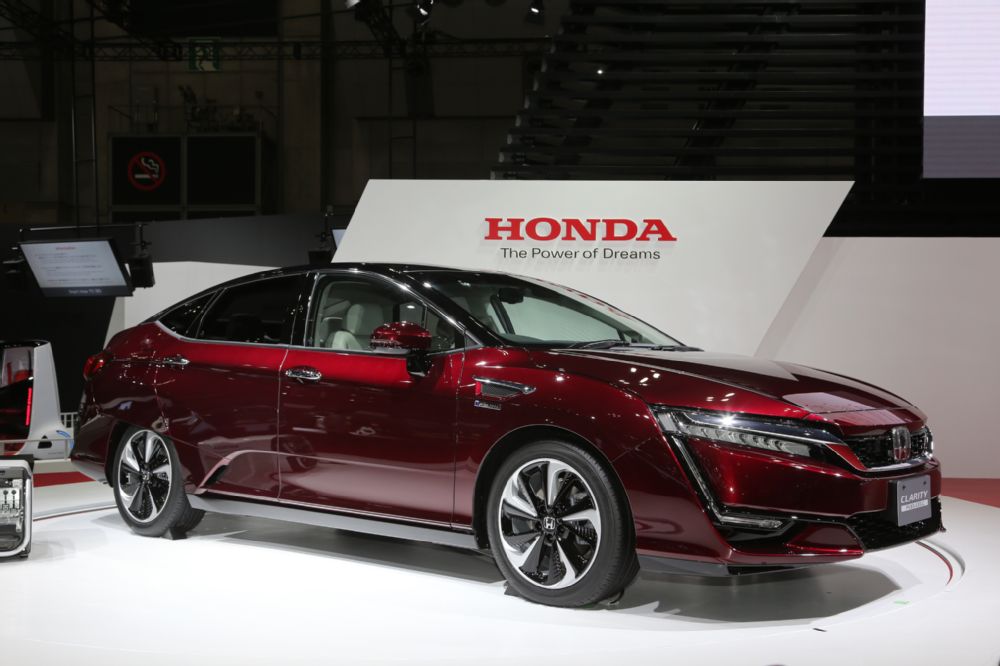
Fast Facts
- Price: $62,000
- Seats: 5
- Fuel fill-up: 3 minutes
- Range: 300 miles
- Engine: Hydrogen fuel-cell
Electricity Production Procedure
Electricity is created by mixing compressed hydrogen with oxygen, with water as a by-product. The resulting electricity is diverted into lithium-ion battery (underneath front seats), onto electrically powered front wheels. Analogous to its rivals, Honda combines natural oxygen from atmosphere with hydrogen stored in tanks for generating the necessary wattage. At present, it supersedes Nissan Leaf and Toyota Mirai in terms of mileage.
Drive-mode
The steering is feathery light, as it takes sharp corners with practiced ease. Honda hasn’t revealed the exact weight of this vehicle, but it’s certainly not designed for race-track use. With a conventional cabin feel, driving a fuel cell car takes an hour to get acquainted to.
Honda Clarity doesn’t require supplementary skills to drive. It’s comparable to Nissan Leaf in terms of performance and speed. Driving Honda Clarity is relatively simplistic with brakes, activating the starter button, followed by several beeps.
Engine
Honda Clarity 2016 is an eco-friendly vehicle, producing electricity and water as byproduct. The fuel cell stack is one-third the size of its predecessor, factory fitted under the hood. As a result, the room for hydrogen tanks increases—a large one and one smaller situated under the seats. The dual cell-pack delivers a combined range of 435 miles. The 174 horsepower engine is ideal for domestic purposes. Moreover, the electrically generated torque delivers a stimulating rush. The distinctive sound generated due to exhaust from fuel cell is unpleasant.
Interior
The size of the fuel cell stack has been reduced by 33% compared to previous FCX versions. It facilitates a spacious cabin for five passengers, compared to Toyota’s capacity of four. Honda supersedes Toyota and Nissan in terms of mileage and passenger space. The dashboard is equipped with Honda’s personalized infotainment system. The climate controls are reminiscent of Honda Civic. The rear seats have adequate passenger space, too. Three adults can sit with somewhat difficulty; it’s more comfortable for adolescents. As of yet, the load area’s dimensions are undisclosed.
Pros
- Zero pollution
- Prolonged eco-friendly drive
Cons
- Quite expensive compared to normative mini-cars
- Rare fuel stations
Article Source: http://EzineArticles.com/expert/Umar_Asad/2170110



